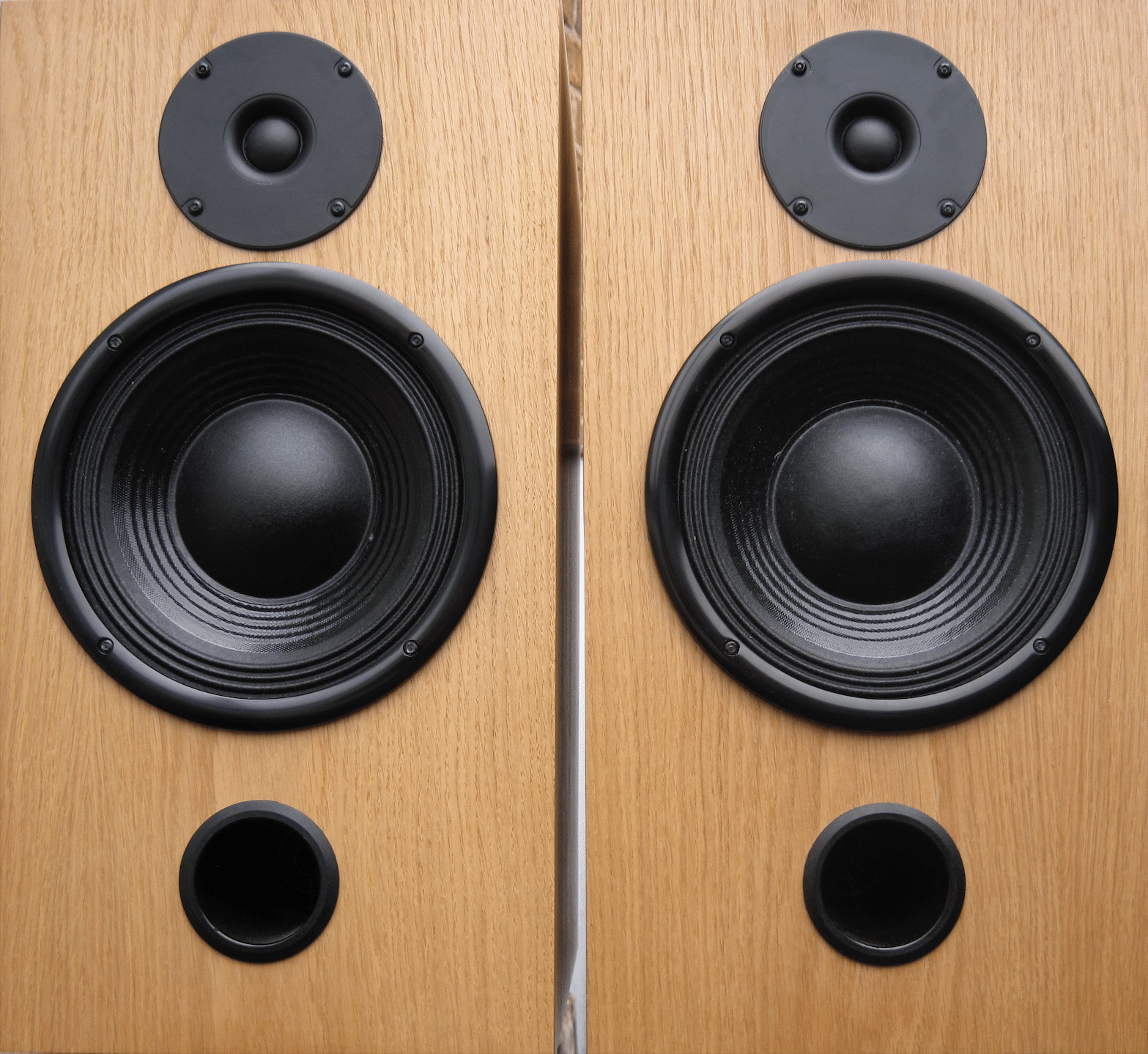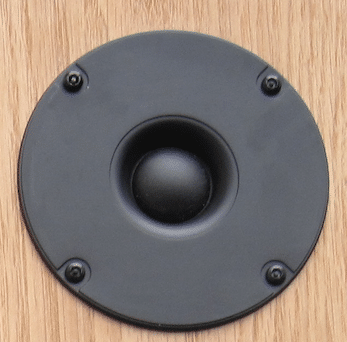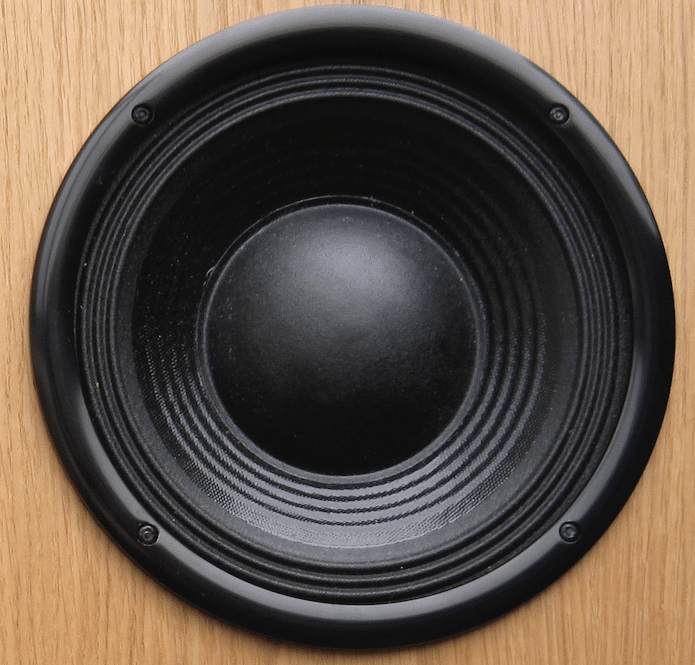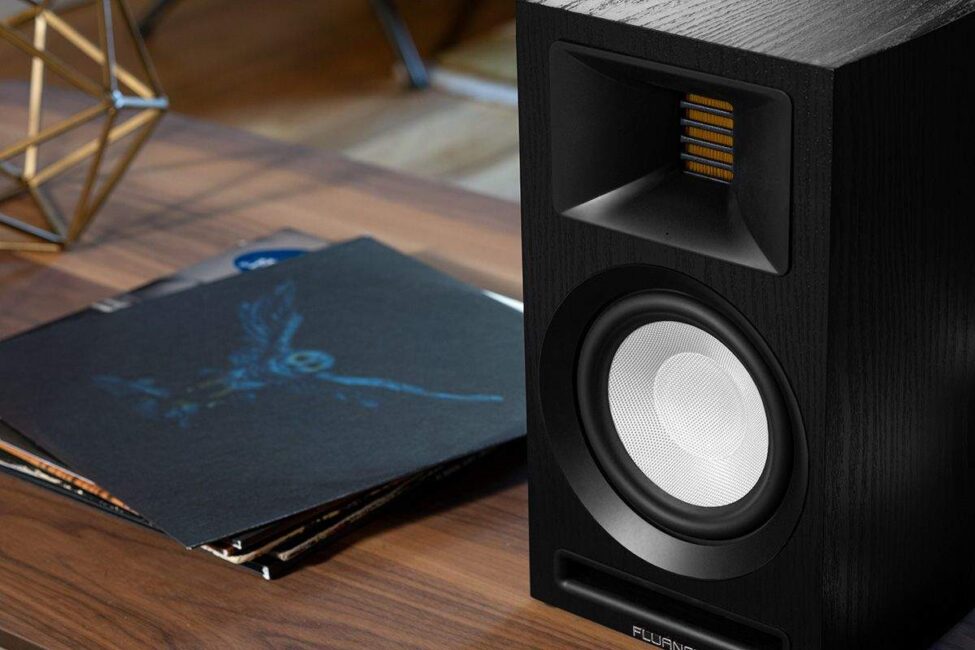The Article
Alacrity CATERTHUN 8 Speakers: I Am Not [Just] A Number!
28th January 2017

A design of individuality that offers a distinctive approach to speaker creation, Paul Rigby reviews the Alacrity Caterthun 8 stand-mounted speakers and talks to the designer, Jonathan Carol
Some hi-fi fans will look at these speakers once, but never twice, their jaws will not drop and they will not slaver over them and withdraw their wallets in Pavlov’s Dog fashion as a trigger response, in a rough impersonation of a fast-draw gunfighter.
These speakers might not look whizz bang, weird or wacky. They don’t present themselves within oddly shaped cabinets and are not coated in a rare audiophile fungus that can only be scraped from rocks found at the top of Everest. They look traditional…old fashioned, even. Of course, to others, that will be the attraction.
But boring? Staid? Run of the mill? Oh no. Far, far from it. These are speakers that really should demand your attention.
Jonathan Carol runs Alacarity and designs the speakers. Carol is passionate about his work, is open to ideas and has the energy and drive of a steam hammer.
On the face of it, the speaker design looks traditional, in broad terms. The wood veneer (available in English Oak, Bird’s Eye Maple, Macassar Ebony and Rosewood) looks lovely and professionally applied while the drivers (a 20cm mid/bass and a 20mm soft dome tweeter) are of high quality. But there is more to these speakers than meets the eye, as Carol explained to me, “In the late 90s, I was granted a full UK patent for my submission on Acoustic Induction,” he said. “This is a loudspeaker filling that promotes the production of a resonant Standing Wave (or ‘peak-Q’: ‘Q’ is a measure of the cabinets’ reaction to stimuli) at every frequency at which it is driven, as opposed to all other cabinet loudspeakers which low-Q and only resonate at discrete frequencies. At resonance, cabinet Q changes dramatically from background readings. A consistent cabinet Q is very desirable, a varying one is not. As it has proved to be impossible to produce a consistent low Q cabinet over the last hundred years or so, we at Alacrity Audio decided to produce cabinets with consistently high Qs . This means my bass-units are retarded in excursion, meaning they’re consistently in their linear-displacement zone and can safely be fed with more power.”
The above is connected to Carol’s use of the front-mounted port, “Everything in this area is about airflow and port noise; putting the port on the bottom or rear is a great way to hide ‘chuffing’. ‘Chuffing’ is caused by turbulence which is wasted energy (not making it out into the room) and therefore wasted music. Our port has been perfected in position and tuning to bring the deepest bass expression from the drive-unit and what we believe to be the smoothest air flow round a port under high-load available on the market. You will never hear our bass-port ‘chuff’.”
So why not go for the closed box system, then? “We did. The very first iteration of Acoustic Induction was an infinite-baffle design and showed much promise. However, by porting the speaker we both deepened the bass response and retarded the cone excursion at the same time. Impossible, I know, but that’s my patent, that’s my new technology.”
The implementation of the front port means that the speakers can successfully be placed near to a wall and actually benefits from such a placement. The cabinets span 250 x 450 x 300mm and weigh in at 25kg per speaker. Inside, air-core coils and non-electrolytic capacitors are used in both bass and treble sections.
IN USE
There are two points of note here. Firstly, around the back are 4mm gold-plated bi-wired speaker cables. There is no other connective option available, you have to use bi-wire cables with these speakers. As Carrol says, you can use bi-wiring plates and use single wiring cables but you will lose part of the effect of the speakers, so just don’t go there. For some, the option of bi-wiring will mean new cables so you may have to factor that cost into your speaker purchasing budget.
Carol explained his preference for bi-wiring on speakers, “Due to the high quality audio output of all Alacrity Audio loudspeakers, we insist that all our loudspeakers are bi-wired. Basically, if you put current through a conductor, you get a voltage dropped. So, if you have a bass-signal being returned from the speaker, you change the earth-point at the speaker by a few milli-volts. With 0v still at the tweeter x-over output but now the earth varying by a few mV, you now have a current path through the tweeter and you can feel it. It makes the brain clamp an attenuator muscle within the inner ear, which leads to listener-fatigue. Bi-wiring maintains a stable earth for the tweeter even under the most demanding conditions, and allows our loudspeakers to reveal detail like no others without tiring the listener.”
SOUND QUALITY
To begin the sound tests, I played the vinyl version of prog outfit, Camel’s Song Within a Song. A dynamic rock track that also features plenty of charismatic analogue synth work and strong percussive elements including a series of delicate cymbal rhythms throughout.
Actually, let’s stay right there. Let’s talk cymbals. If you hit a cymbal, a big piece of flat, tuned, metal and you really listen to it, will notice that it pulses. Right after the hit, the after-effects build and then shoot out to the ear in a dispersal fashion. There are not too many speakers out there that can truly capture the pulsating effect of a perfectly struck cymbal but, on this Camel track, the Cat8s did just that. Such treble-based information was fascinating to listen to and it added a sense of musical breadth to the overall presentation of these speakers.
We started with treble, so lets proceed down the speaker and the midrange, the upper mids to be exact. There is a slight glare here. Not really a brightness, it’s not that bad, it’s a slight stridency that was present, on this track, during the flute solo and also a couple of higher-pitched synth runs. The effect, which was not heard in the treble area, was to remove any chance that these speakers could be described as neutral. This emphasis in the upper midrange is accentuated at high volumes. There are advantages with this kink in the speaker’s persoanlity, though. On a rock track, such as this one, the effect can add to the dynamic energy and can help the speakers to dig into a mix to accentuate and underline shy and recessed detail. That happened here with subtle synth elements and a low visibility rhythm guitar all being lifted by that midrange emphasis.
Finishing on the bass, for the size of the cabinet I was happy to hear a forceful and characterful suite of lower frequencies. On this rock track, bass guitar was easily heard and tracked by the ear. It was both rhythmic but also provided a drive and support for the track as a whole.
I then turned to vocal jazz and Ella Fitzgerald and her Sings Broadway LP, with the track, Hernando’s Hideaway.
Despite the change in genres, the same pattern could be discerned. Hence, the treble was beautifully crafted. Lightly tapped cymbals, which populated and appeared through this track provided a rich tapestry of sound that added both a fragility but also a information-heavy layer to the music. That treble also infused secondary percussion which aided focus and character.
When Fitzgerald entered the fray, the midrange was smooth and informative until she hit her own crescendos. At this point, that midrange spike appeared again to add a certain amount of discord to the proceedings at high volumes.
At lower volumes, this effect was not a big problem and, in fact, actually aided detail retrieval, the speakers pointing out detail highlights to the ear. Similarly, brass crescendos also triggered the same effect yet, away from such forceful playing, the tonal realism was impressive, especially when lower frequencies cam into play. The presentation from the bass saxophone was simply gorgeous: packed with texture and a personality that dripped quality.
CONCLUSION
A fascinating pair of speakers, it’s great to see a designer employing originality of thought and imagination in terms of the conception. One that stands apart and trods his own path. Despite the issues in terms of the midrange, there is plenty to like here and I would encourage a demo. I suspect that there will be listeners out there who will see the midrange emphasis as no big deal and will simply fall in love with the treble and bass and this speaker design’s insightful presentation.
ALACRITY CATERTHUN 8
Price: £3,500
Tel: 01273 697 848 or 07986 516 925
Web: alacrityaudio.co.uk
GOOD: bass performance, treble insight, easy to drive, wall positioning aids family room placement
BAD: bi-wire only, midrange emphasis
RATING: 7
REFERENCE SYSTEM USED
Origin Live Sovereign turntable
Origin Live Enterprise 12” arm
Transfiguration Proteus cartridge
Leema Essentials CD player
Icon Audio PS3 phonostage
Aesthetix Calypso pre-amp
Quad ESL-57 speakers with One Thing upgrade
Vertex AQ, Black Rhodium & Tellurium Q cabling





Since hearing 805’s back in the late ’80’s, stand mounts are my preference. They have come so far in the high end segment.
I have a pair of the Caterthun 8s and the treble is aggressive, sometimes wildly so, rendering the speakers unlistenable. Either I have a substandard pair, or the reviewer is deaf!
Hi Peter – I did pick up a stridency and a ‘glare’ in the upper frequencies, which I did state in the review. I agree that the balance is tilted here. If you are detecting extremes in this area, though, then I would suggest that other factors are at work in terns of emphasising those frequencies.
No, you mentioned a “slight glare” – “not really a brightness” and you said it was not heard in the treble area. This is more than slight – it is like chalk being scraped across a blackboard (and that ages me!) and is most evident in something like a sopranino recorder, but is present throughout the treble range. And I have switched back to some old speakers to check that it really is the speakers and not the amp or the cables or the recordings etc. It is not just an emphasis, it is genuinely painful to the ears. Since the speakers I have are ex-demo, I have fortunately only wasted 50% of the price. I think people contemplating spending 3.5k on these should be warned to proceed with care.
Hi Peter – I don’t doubt you at all and I’m sure that you hear the bright element. The review you have read, though, is based upon my reference system, using my components and in my room. Hence I am reporting what I hear from there. There are no absolutes in hi-fi. My slight glare is your extreme glare, for example.
My system has been developed over decades of use and utilisation as a review tool and it has been created over time to be as neutral as possible so that the component itself is reviewed and no influences are being drawn in from elsewhere.
My comments to your first message was my subtle attempt to draw your attention outside of the speakers and even outside of the hi-fi system itself. As I say, I did hear the speakers – even in my wholly neutral arena – want to lean towards a bright sound and I stated that fact, even if the extremes were not heard on my system. That says to me that caution is required and that, once you removed your old speakers (I wonder if they were rather warm in nature?), if you have anything else in your chain that is of a brighter ilk, then that component will only add emphasis to this ‘leaning’ making things sound worse via the speakers. So, for example, if you have a cartridge that has an inherently bright sound, then everything else will be affected by that by some degree. I’ve heard people with a bright cartridge blame the speakers because that’s where the sound comes from. But the issue was the cartridge, not the speakers. I’m not pointing at your cartridge, Peter, I’m just using this as an example. It could be anything.
You also have to look at the room itself, how you site and position your hi-fi, what type of shelving if any do you use, do you have any isolation in and around your system, etc. Why? Because noise loves to invade your hi-fi chain. One of the aural results of lots of noise in a hi-fi chain can be a bright emphasis in sound reproduction. Another example, I’m literally writing a feature right now on how Wi-Fi can add such an emphasis because your speakers ‘play’ the noise from your phone/laptop/router.
All of these things can add more warming or brightening emphasis to the character of any component. This is why home demos are crucial. Because your room and system will impose its character on any new component that you wish to buy. It probably won’t sound the same as the set-up you might hear in a dealer’s show room.
Reviews from the likes of myself are there to provide you with a guide – not the truth as lived by yourself. That said, I’m always here for you so if I can help you, you can always give me a shout. Sorry for the long reply.
Thank you for your extensive reply. However, I am afraid I do not accept that anything you have said has any relevance to this particular situation. And it smacks of CYA. What I hear is so extreme that it is beyond what could possibly be explained by any “emphasis” from the rest of the system. The treble sounds that I hear should not be produced by ¬£100 speakers from a supermarket, let alone properly built speakers at this price point. .
Home demos might be crucial, as you say, but if one lives in central France, they are hardly practical! Your review did not provide me with a reliable guide.
Sorry I couldn’t help, Peter.